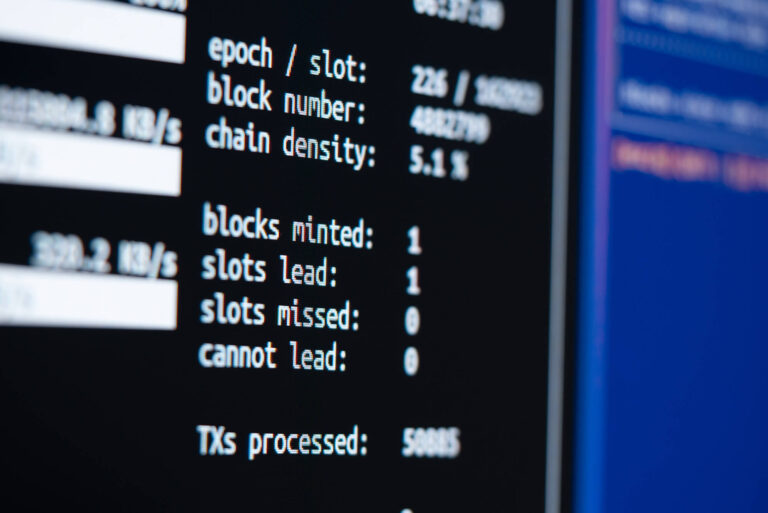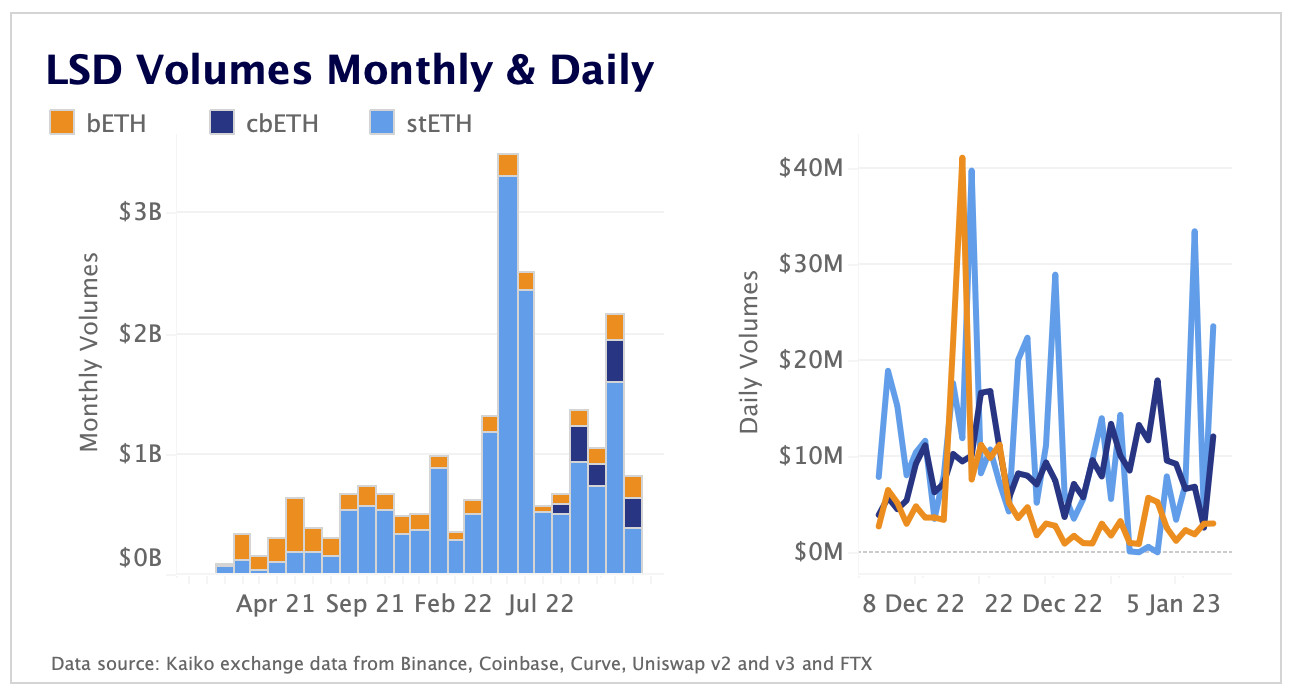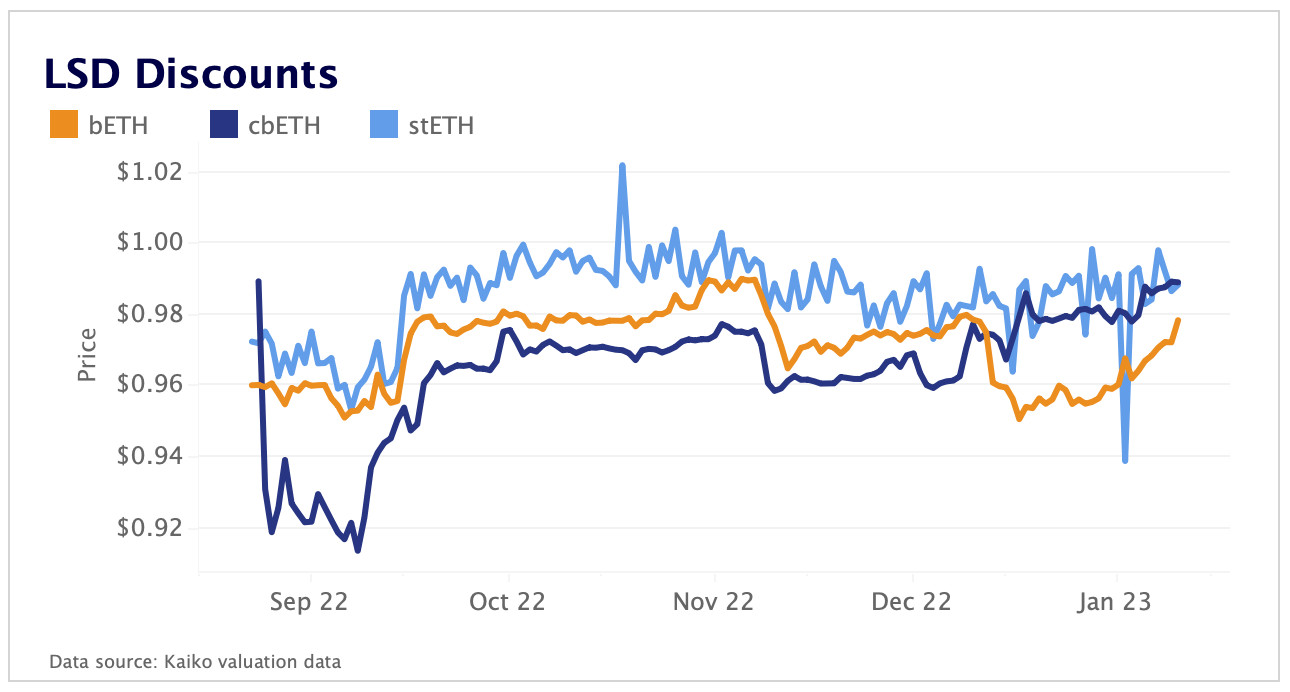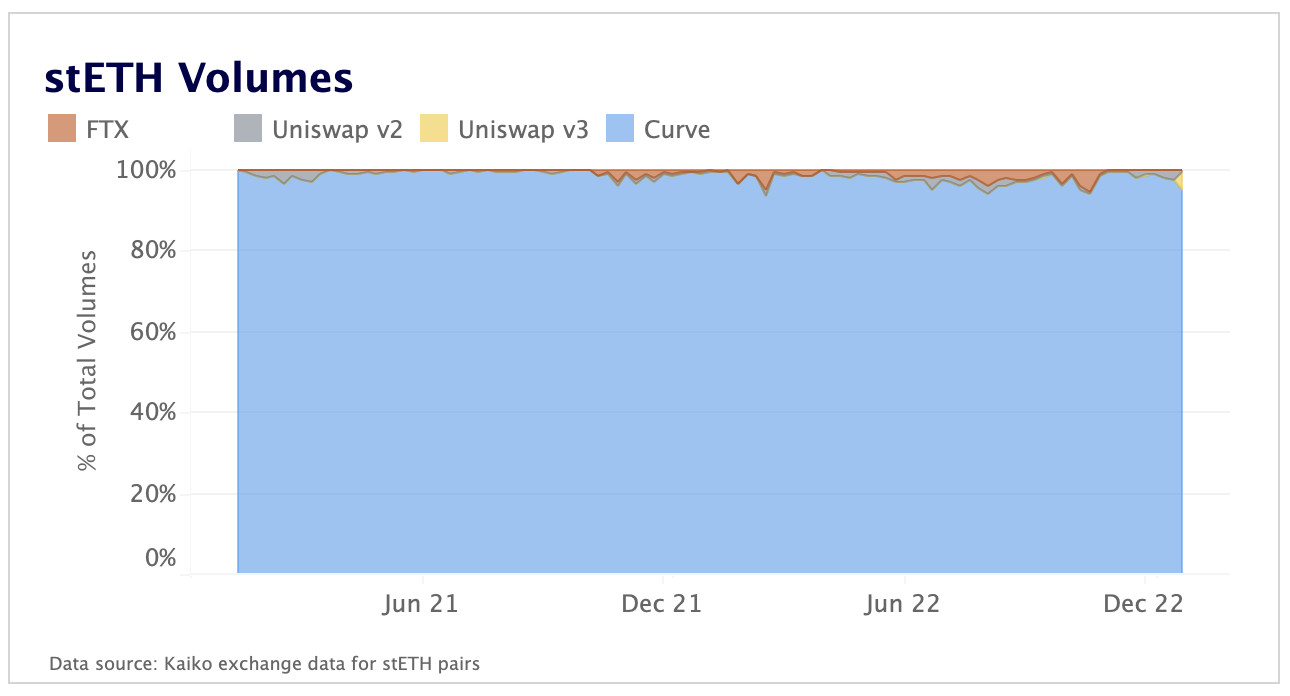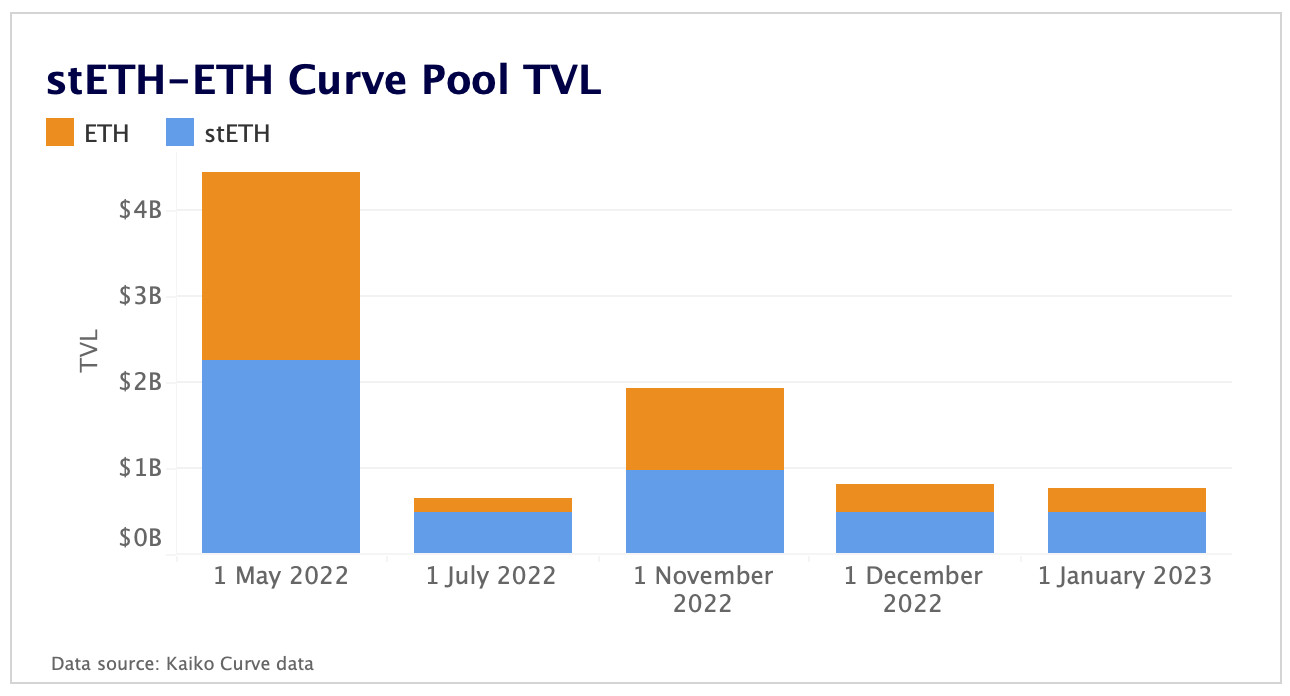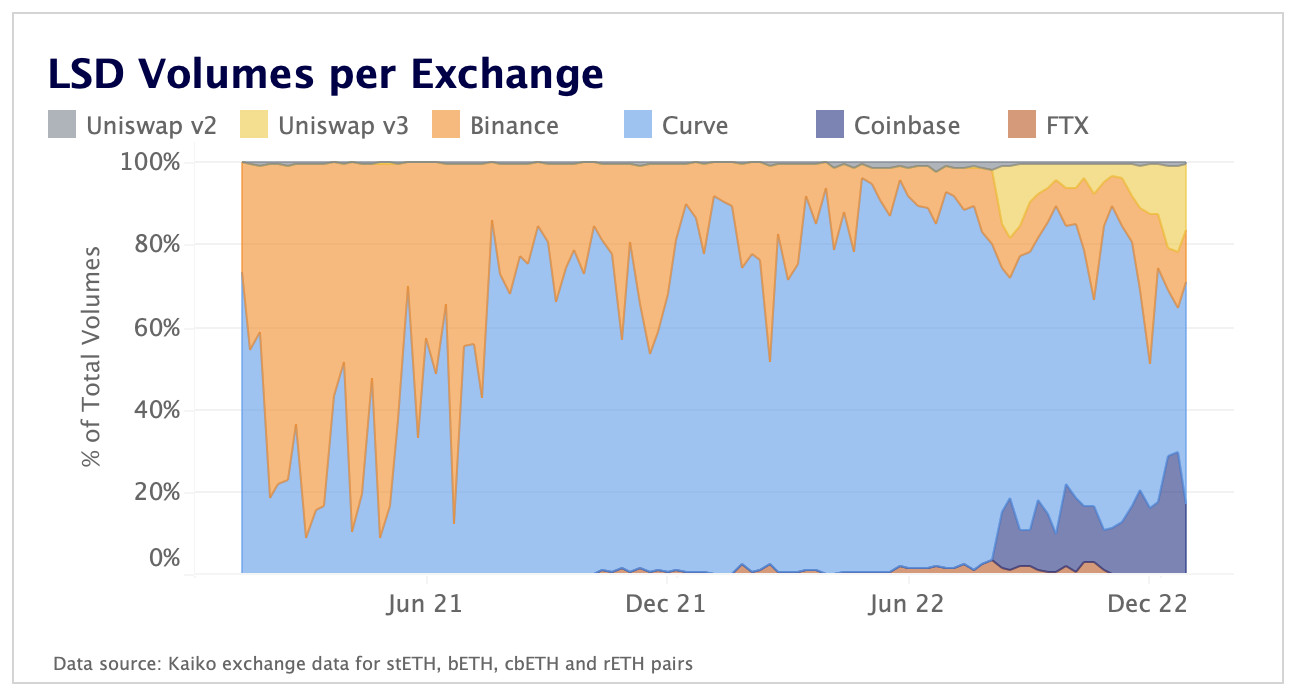As a proof of stake network, Ethereum rewards stakers with block rewards and user fees. However, the 32 ETH minimum required to stake your ETH directly on the network prohibits the vast majority of users from doing so. Here's where Liquid Staking Derivatives (aka LSDs) come into play.
Liquid Staking Derivatives refer to the tokens created by DeFi protocols or centralized services designed to reward users who stake ETH on their platform. These platforms do not have the prohibitive minimum 32 ETH staking requirements, which makes them enticing to smaller ETH holders that want to participate in staking while still reaping rewards. LSDs give users a token representing staked ETH that can then be used across centralized and decentralized applications, relieving some of the liquidity risk associated with locking up ETH until withdrawals are enabled.
This is the main benefit of LSDs over just staking ETH with one of these platforms, as you can use the liquid token to farm yield across different applications. If you don’t stake ETH already, buying LSDs on spot markets also offers up an opportunity to buy ETH at a discounted price. Holding the LSD until it can be redeemed 1:1 for ETH, once withdrawals of staked ETH are enabled, appears to be an attractive trading strategy.
A market dominated by 3 entities
Much has been talked about the individual DeFi protocols that offer LSDs, such as Lido and Rocketpool, and their competitive battle to lead the market. However, another less explored battle, taking place with LSDs as the weapon, is between exchanges.
In the midst of depressed volumes and consolidating markets, exchanges are looking for any revenue generating stream they can find. LSDs and staking services provide exactly that, and ahead of withdrawals being enabled in March (Shanghai Upgrade), the competition is heating up between exchanges to reap the rewards of being a market leader in LSDs. This article will look at that battle in more detail, but first, it's important to look at the different LSDs and their platforms that shape the market at present. Today, the LSD space is dominated by three platforms:
- Lido Protocol - a decentralized protocol that issues the token staked ETH (stETH). Currently has over 4.6m ETH staked for a 29% market share of staked ETH.
- Coinbase - a centralized exchange that issues the token cbETH. Over 2m ETH staked for a 13% market share.
- Binance - a centralized exchange that issues the token bETH. Over 1M ETH staked for a 6% market share.
There are a handful of smaller liquid staking platforms, including Rocketpool and Frax, but they only account for a small fraction of ETH staked so far and their adoption in volume terms is minimal compared to the larger competitors. Kraken has a significant 1.2M ETH staked, but their interest is locked until withdrawals and they don’t provide any LSD token so they have been excluded from this analysis.
Lido's stETH dominance fading
Trade volumes are a useful metric in assessing the usage of each LSD. After all, the whole point of providing a liquid token is to enable trading of staked ETH. If a token is heavily traded on exchanges, it should be expected that a lot of the revenue from staking and trading will accrue to the exchanges and protocols behind each token.

Looking at volume share split out per LSD token, on both centralized and decentralized exchanges, it’s been a three-part story thus far. Firstly, Binance’s bETH led the market in volumes almost as soon as it was launched, commanding 90% of the market at its peak. This share was slowly eroded by stETH as Lido grew in popularity, at one point owning 96% of the market in June 2022. Since then Coinbase launched cbETH, which has grasped a near-market leading position in volume terms: possessing 50% of all volumes to ring in the new year before dropping to about 30% of the market since.
Daily and monthly volumes tell the story of stETH dominance, but importantly, a fading dominance. To start 2023, cbETH briefly passed stETH in daily volumes and it has consistently been gaining in monthly volumes since its launch in August of last year. Each token, in fact, has a slightly different makeup, which helps explain the constantly changing market structure for LSDs. Let’s take a look at three big differentiators between the top 3 LSDs.
LSDs as a new source of revenue for Coinbase?
One of the stark differences that jumps out first are the varying fees on staking rewards. The decentralized option, Lido, comes in at 10%, while the more centralized Binance only has a 5% fee, and Coinbase comes in at a staggering 25%. Interestingly though, as we saw above, it has been Coinbase’s cbETH that has proven more popular lately despite the higher fee - I’ll suggest why shortly when looking at the exchange level.
If cbETH can maintain the trajectory it's on at present, with a 25% fee on staking rewards that goes directly to Coinbase, liquid staking should be an absolute cash cow for Coinbase and should be bullish for the company and its stock price. We can expect a lot more institutional adoption of staked ETH too once withdrawals are enabled in the upcoming Shanghai network update as a lot of the liquidity risk is alleviated: stakers can freely stake and unstake their ETH after the update. What’s interesting is Binance’s 5% fee, which in a vacuum would be the best option. However, there’s more to consider than just fees when it comes to Liquid Staking Derivatives.
Current discount to ETH
Due to being less liquid than the ETH they represent, as well as protocol and smart contract risk, LSDs often trade at a discount to ETH. bETH and cbETH have always traded at a larger discount compared to stETH, due to the influence of their centralized backers Binance and Coinbase.
There was a notable inflection point in December, however, as cbETH approached stETH price levels and has been trading in line with stETH since. Notably, cbETH had been trading at a larger discount to ETH, compared to bETH, up until Binance’s solvency fears went viral last month. Since then, it seems users have placed more value in Coinbase’s regulated and transparent operations versus Binance’s unregulated and opaque setup. bETH now trades at a 2% discount to ETH, while cbETH and stETH trade around a 1% discount.
Curve dominating the decentralized space
While token type gets a bit technical, it helps paint an important picture in the battle between exchanges for LSD market share. Token types for LSDs so far are either reward bearing tokens, or rebasing tokens. Reward bearing tokens, like cbETH and bETH, increase in value as rewards accrue from staking rather than by changing their supply. Rebasing tokens, like stETH, change their total supply in order to distribute value to token holders by increasing their amount of stETH held.
Rebasing tokens are more complicated for liquidity pools as the amount of stETH in supply changes, making it tough for Uniswap v2 or v3 to offer significant stETH liquidity. This is where Curve steps in, being able to handle stETH liquidity in the billions of dollars due to Curve’s better ability to provide single side liquidity. Curve owns a staggering 95% of stETH volumes as of writing.
However, as has been the case with most other Curve pools, liquidity for the stETH pool has fallen drastically since last year, as liquidity has become a premium and investors have withdrawn from the decentralized exchange en masse.
Lower liquidity and falling stETH volumes have opened the door for the more centralized players, Binance and Coinbase, to gain significant market share. 2023 looks to be a year of fierce competition between exchanges for LSD volumes: one of the best-looking bets in crypto to increase their volumes in the new year.
Fierce battle for LSD market share
Since the launch of cbETH, Coinbase has become a big player in the LSD market, commanding 15-30% of volumes since the start of the year. Despite Binance having a headstart on their rivals, LSD investors seem to be preferring cbETH over bETH, and Coinbase is reaping the rewards. Investors are likely preferring the regulatory safety that comes with Coinbase, despite the significantly higher fee with Coinbase at 25%, versus Binance’s 5%. That alone is an interesting pricing dynamic for 2023: investors seem happy to pay 5x the fees for the safety of transparency and regulation.
Largely thanks to its dominance in the stETH market, Curve commands a 54% market share of LSD volumes as of writing, with Coinbase at 17%, Uniswap at 16% and Binance at 13%. The fall in Curve market share coincides with the introduction of cbETH, of which Uniswap and Coinbase have been the main beneficiaries who split cbETH volume almost equally. Curve has responded to the rise of cbETH by increasing yields on the cbETH Curve pool from 5% to 10% in an effort to recapture their dominant market share.
However, one could expect Coinbase to only grow in market share the closer we get to withdrawals. The Shanghai Upgrade should see a massive de-risking of LSDs in the form of liquidity risk being drastically reduced. This should see institutions getting more involved in the ETH staking space, and Coinbase will undoubtedly be their go-to option as a US regulated entity. This should see Coinbase dominating LSD volumes at the expense of Curve, Lido and any other protocol relying on stETH as one of their main revenue streams.
Liquid Staking in 2023
LSDs have been the hot narrative to start 2023, and with institutions set to enter the space once users can stake and un-stake at will, it’s shaping up to be a big year for the LSD tokens and exchanges/protocols fighting for market share. Coinbase looks best positioned to benefit from the influx of interest in Liquid Staking Derivatives via cbETH, and their 25% fee will generate a much needed cash flow in a low volume environment for exchanges. If the trend since cbETH was introduced continues, Coinbase’s success will be at the expense of Curve, from an exchange point of view, and Lido, from a protocol point of view.
Gun to my head, cbETH will overtake stETH in trading volume as a result of better liquidity in the more regulated entity in Coinbase, while the trend of diminishing Curve liquidity continues to hamper stETH. All LSD discounts should tighten even closer to 1 as liquidity risk is significantly reduced and arbitrageurs can start arb’ing the discount away with withdrawals enabled.

